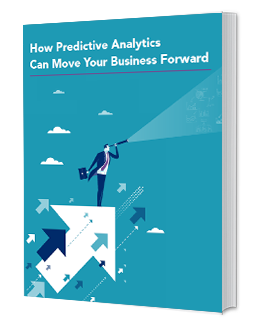
Human resources are vital constituents for every organization. In today’s age of competition and growth, it’s become crucial to view people as assets rather than “costs” to the organization. In a fast paced world , skill requirements are constantly changing with rapid advancement of technology and regulations.
Human capital dynamics demand that we apply analytics to reconfigure our workforce scenarios and predict our next best move or else we lose competitive advantage and market share. Human Resources (HR) analytics refers to the integration of relevant HR statistics from different sources, analyzing this captured data, and ultimately establishing the predictive models based on business requirements and funnel the available data into the respective model and utilize it towards organization performance.
Significant Challenges faced by HR 
Every business function has to make some or other changes such as reduce costs, increase revenue etc to stay profitable and grow. Some of the biggest challenges faced by HR teams and other key executives in maintaining growth rate and managing human capital across various segments include :
- Handling the Talent acquisition and resource management
- Training and appraisal
- Forecasting and Budgeting
- Fraud Risk management
- Key Employee Analysis
Although financial capital (cash) and economic capital are the lifeblood of a business, it is human capital that apply logical skills and leverage intangible assets to drive business performance. Companies are exploring new opportunities for utilizing the ever-increasing volumes of data from various segments and affixing it with strategical approach which ensures that analytics and its outcomes are aligned with business objectives.
Predictive analytics for HR is based on establishing an analytics-driven statistical relationship between the objectives of HR function and fruitful resources available within an organization.

Key segments where Predictive Analytics Can enhance Value for HR domain include :
- Employee Segmentation and Profiling : Predictive analytics can be leveraged for effective talent management by accurately segmenting employees which can help in understanding the employee base in a better way. A statistical relationship between profile variable (such as education and experience) and employee value enables HR to identify the most deserving profiles. This helps to increase quality and reduce recruitment cost extensively creating sustainable value for the organization.
- Training and Appraisal : Predictive Learning algorithms can help predict the impact of organizational requirements and tailor the programs accordingly for improved outcomes. Predictive analytics helps identify employees with particular training needs as well as detect emerging trends in areas such as program diversity, enrollment, onboarding, employee management etc.
- Forecasting of Human resources and Recruitment Needs : Predictive analytics helps to better forecast the organizational requirements by building targeted recruitment plans,optimizing HR partner initiatives etc. This enables organizations to maximize resource utilization and amplify appropriate growth and profit margins.
- Key Employee Analysis : HR professionals should capitalize on unstructured and structured data from multiple sources to create or redesign their initiatives targeted for Key employees at different levels. Key employee analysis is more effective than general employee surveys in getting fruitful and productive feedback. Such information can promote understanding of how various HR policies, initiatives, organizational changes are being perceived by the employees.
- Employee Fraud Risk Management : Predictive analytics helps improve the fraud risk management by enabling an organization to identify employees who are at increased risk of non-compliance with the organization's security policy. Organizations can formulate a fraud risk score by analyzing employee activity reports using statistical modeling techniques. This can help protect the company's reputation and possibly prevent financial impact.
- Intangibles : HR function reports costs of various activities such as training, recruitment, appraisals, perks, incentives etc. Moving in line with strategic objectives, HR teams can increase its organizational presence by focusing on intangibles assets (such as leadership, culture, commitment, loyalty) of organization. Knowledge based on Predictive models can guide towards changes in leadership capability, engagement, culture etc which can be used for better planning and predictions.
The Leveraging effect
The key to realize maximum benefits from the Human capital data lies in aligning tying the different data sources to strategic business objectives. Leveraging data from different sources along with application of predictive models helps in projecting the right picture clarifying holistic analysis of the organization. Blending of statistical information from government and other sources along with organizational data provides a clear ground for effective planning and meeting both short term and long term goals of the organization.
To play a more strategic role in the organization, HR teams need to move ahead from operational analytics to predictive competence. Instead of generating reports for operational effectivity, it needs to embrace advanced predictive algorithms that support strategic organizational vision and objectives.
Predictive analytics helps organizations manage monetary formalities while developing a high performing workforce. Predictive analytics might be uncharted realm for HR domain, therefore to fully capitalize on analytics expertise, HR personnel need to collaborate with other business domains to understand how can they leverage existing data to create sustainability for brand and value. By doing so, HR departments can boost superlative employee experiences which can aid to achieve projected long-term goals with desired optimum efficiency.
Pixentia is an enthusiastic team of individuals, fervent to make lives simpler through effective use of technology. Our mission is to implement solutions that drive business results. Know more insights from our thoughts and experience.


